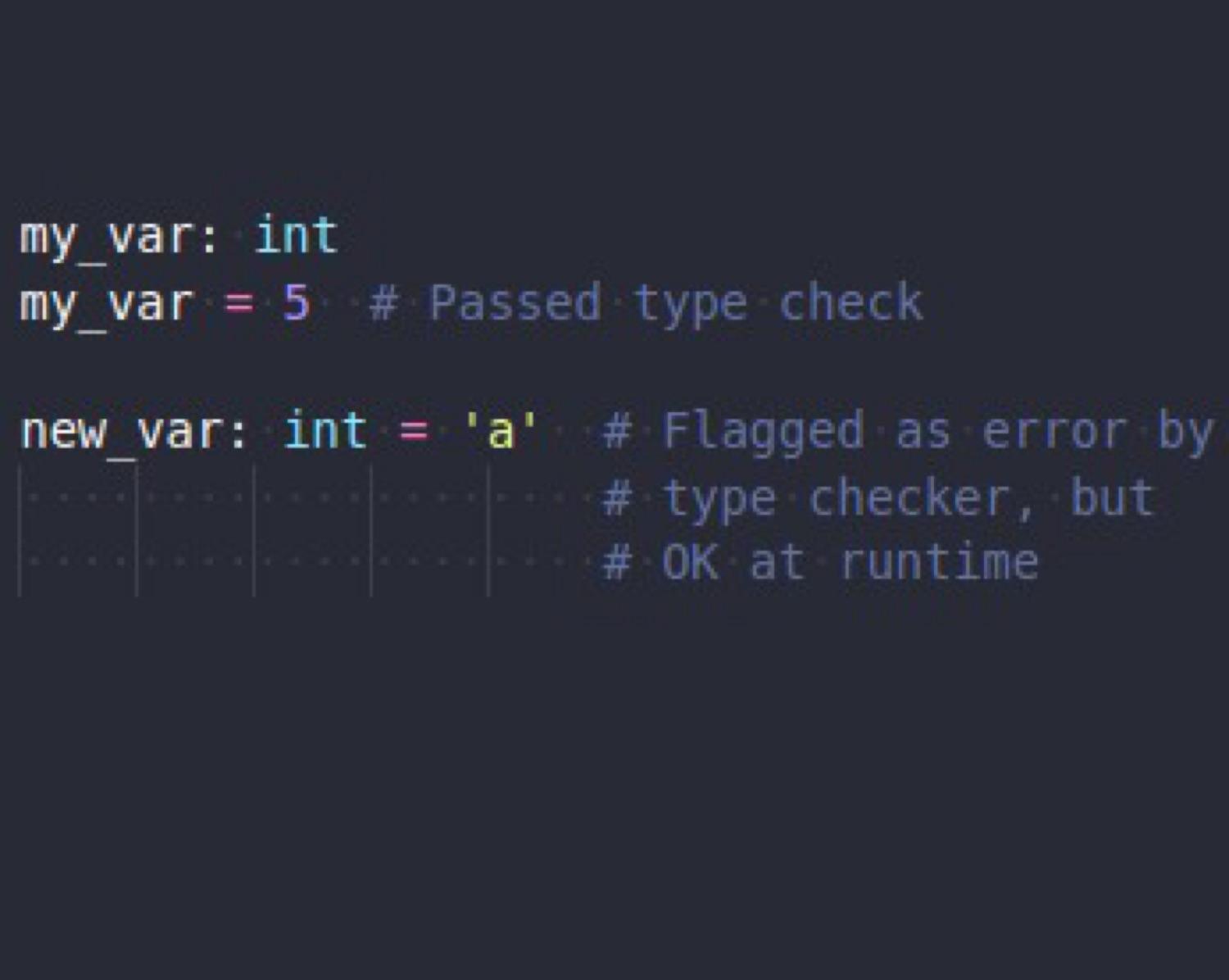Explore the World's Best Ideas
Join today and uncover 100+ curated journeys from 50+ topics. Unlock access to our mobile app with extensive features.
Type Annotations
PEP 484 introduced type hints (typing module), a.k.a type annotations. While its main focus was function annotations, it also introduced the notion of type comments to annotate variables.
Ex: primes = [] #type: List[int]
Although type comments work well enough, there are some downsides:
- text editors highlight comments differently
- one can’t annotate uninitialized variables
- mixing type comments with normal ones is confusing
The solution: Variable Annotations
10
64 reads
Variable Annotations
PEP 526 introduced the syntax for Variable Annotations:
var: annotation = value
Variable Annotations don’t affect the Python principle of being a dynamically typed language.
Type annotations can’t create errors, they are checked only by third party type checkers like mypy.
See image example.
10
42 reads
Class and Instance Variable Annotations
Type annotations can also be used to annotate class and instance variables in class bodies and methods.
In particular, the value-less notation: a: int allows one to annotate instance variables that should be initialized in __init__ or __new__. See the syntax in the picture.
As one knows, defining class member variables is not mandatory but it’s useful for providing autocomplete functionality while coding.
The differences between class and instance variables are discussed in the following idea
10
28 reads
Class Variables vs. Instance Variables
When one defines a member variable in the class body definition, the interpreter considers it a class variable.
class Dog:
name: str = ‘Doggo’ # class variable
In the __init__ constructor, one does have access at the ‘name’ class variable using ‘self’. But as self represents the instance of the class, in the constructor scope, ‘self.name’ becomes an instance variable.
By deleting the ‘name’ attribute from a Dog instance, one can access the ‘name’ class variable once again.
10
33 reads
IDEAS CURATED BY
CURATOR'S NOTE
As I strive to become a better python programmer, I’ve started using type hints and created this intro guide
“
Pavel-Vlad Mateescu's ideas are part of this journey:
Learn more about computerscience with this collection
Understanding machine learning models
Improving data analysis and decision-making
How Google uses logic in machine learning
Related collections
Similar ideas
4 ideas
Type Checking Paradigms
en.wikipedia.org
3 ideas
Introducing Sanic: The Python Asynchoronous Web Framework
mausamadh.medium.com
Read & Learn
20x Faster
without
deepstash
with
deepstash
with
deepstash
Personalized microlearning
—
100+ Learning Journeys
—
Access to 200,000+ ideas
—
Access to the mobile app
—
Unlimited idea saving
—
—
Unlimited history
—
—
Unlimited listening to ideas
—
—
Downloading & offline access
—
—
Supercharge your mind with one idea per day
Enter your email and spend 1 minute every day to learn something new.
I agree to receive email updates




